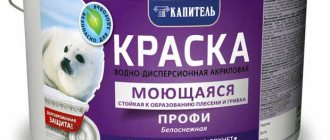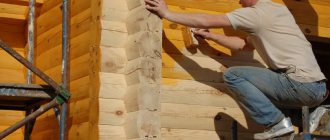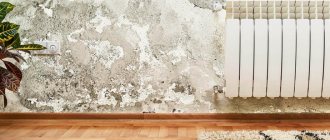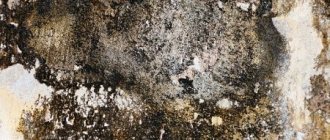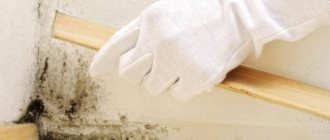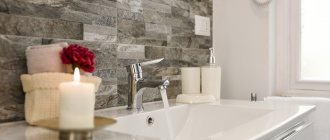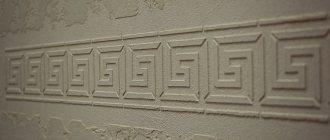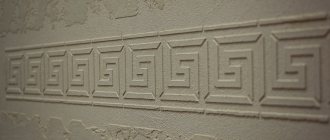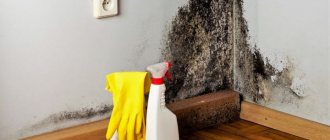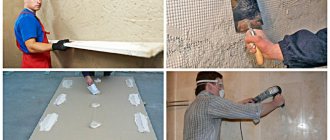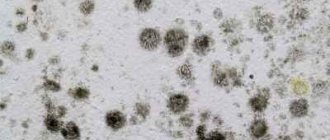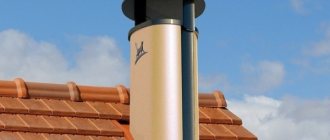Mold spores spoil any surface, worsening its appearance. But they also have a negative impact on human health. Therefore, when signs of fungal development appear, it is necessary to begin an active fight against it. In addition to special means, there are folk remedies that can solve this problem, including copper sulfate. But it is recommended to use it carefully. Therefore, it is worth figuring out how to use copper sulfate against mold.
What is vitriol and how does it happen?
In addition to copper sulfate, there are other types of vitriol. However, copper sulfate is used to eliminate fungal spores. It represents crystalline hydrates of sulfates. Actively involved in medicine, agriculture, and construction. Externally, vitriol resembles small crystals with a blue tint.
Copper sulfate is used to eliminate fungal spores.
What properties does copper sulfate have?
It was noted that copper sulfate is used in medicine, as well as in the agricultural sector. However, it also found use in everyday life. It is often used to remove traces of mold. Suitable even for wood. Copper sulfate can also remove traces of rust. Can be used to prevent the formation of fungus. Among the key properties of the substance are antiseptic.
Copper sulfate can be used to prevent the formation of fungus.
Vitriol is...
First, it’s worth finding out what vitriol is. So, vitriol is a divalent metal, which is called crystalline hydrates of sulfates. Otherwise, we can say that it is sulfuric acid plus metal. In turn, crystalline hydrate is a combination of water and salt.
There are 9 (nine) types of vitriol:
- Vanadium - heptahydrate, vanadium sulfate, is red-violet crystals, easily soluble in water. It looks like VSO4 – vanadium salt + sulfuric acid. The main role is restorative: it restores metals from gold, copper and tin salts; from nitric acid and nitrites - ammonia, including derivatives; from sulfites - hydrogen sulfide.
- Iron - tetraoxosulfate, sulfuric acid iron salt, is an inorganic, non-volatile, odorless, bluish-green, green or colorless, but extremely hygroscopic and erodes in the air, since the loss of water of crystallization occurs. It has the formula FeSO. It dissolves in water at a temperature of +20 (plus twenty) degrees, has virtually no toxicity. Its main uses are agriculture, textiles, preparation of mineral paints and inks, dyeing wool black, and medicine. In principle, you can get it at home: dilute sulfuric acid to 10% (ten percent), using any container, except for metal, and while it is hot, dip any iron into it (old, rusty nails, scraps of roofing iron, etc.) etc). Why is it preferable to make iron sulfate at home? The thing is that in industry it is a by-product during the etching of ferrous metal, so it contains a lot of unnecessary impurities. So, the procedure should be carried out outside, since the smell is still the same. As soon as iron is thrown into the acid, a reaction begins with the release of hydrogen. When the bubbles stop appearing, the reaction is over. We add a new batch of iron and the reaction resumes. If not, everything is ready. As a result, there are two options for the liquid: either a greenish liquid with corroded nails, or nails overgrown with green crystals in an almost transparent liquid. Also in both cases there will be a black residue present as a result of the presence of carbon in the steel. Afterwards, pour into a separate bowl, trying to prevent sediment from getting in, and evaporate. Thus, leaving it to dry overnight after evaporation, in the morning you will get iron sulfate crystals.
- Cobalt - cobalt sulfate, red vitriol, are crystals of red (cobalt sulfate heptahydrate) or pink (anhydrous) colors. The formula of the substance is CoSO4 – divalent cobalt salt + sulfuric acid. It has extremely high hygroscopicity with slow dissolution in water, poor dissolution in sulfuric acid concentrate and ethanol, more or less dissolution in glycerin, methanol. The main application is one of the components for galvanic coating of other metals with cobalt, as well as a component for coloring ceramics and glass. However, cobalt is a toxic substance, so it should be handled with extreme caution.
- Copper - copper sulfate, copper salt of sulfuric acid, is an odorless, hygroscopic substance, with various shades of blue, bitter-metallic astringent taste. It has a formula - CuSO. It is used in almost all areas, including the food industry - E519 (five hundred nineteen).
- Nickel - nickel sulfate, nickel sulfate, nickel sulfate crystal hydrate - white-yellow crystals, extremely hygroscopic and very soluble in an aqueous environment. Formula – NiSO Used in the production of fungicides, batteries, catalysts, perfumes and the fat industry. But it is worth remembering: nickel sulfate is carcinogenic, highly toxic, a strong allergen, causes mutations, a sufficient dose for death is from 32 (thirty-two) to 122 (one hundred and twenty-two) milligrams per kilogram. Its natural analogue is morenosite, a greenish-white or apple-green mineral.
- Lead - lead sulfate - has the formula PbSO This vitriol is practically insoluble in water, poisonous, highly toxic, easily penetrates the skin and mucous membranes, damaging the kidneys, the central nervous system, and impairing vision. It is used as a component for the manufacture of pigments, and is also formed during the discharge of lead-acid batteries. Just like the previous type, it has a natural analogue - anglesite, a mineral that is anhydrous lead sulfate.
- Chromium - trivalent chromium salt + sulfuric acid - violet-red crystals with magnetic susceptibility. Anhydrous fractions dissolve very reluctantly in acids and water. When heated, it changes color from purple to green. Formula – Cr2(SO4)3. Chrome sulfate is low-toxic and is used in color photographic printing, as a mordant for dyeing calico and tanning leather.
- Zinc – zinc sulfate, sulfuric acid zinc salt, is a powder with transparent, colorless crystals, unstable, eroded by air, odorless, but astringent, pungent taste. It has the formula - ZnSO. Zinc sulfate is used for the production of viscose, glaze (which coats ceramic products), mineral paints, in agriculture (as a fertilizer), as a flotation reagent (one of the methods for enriching minerals), batteries, medicine (tablets, eye drops), chemical energy sources, as an additive to animal feed. However, zinc sulfate is extremely toxic, and its contact with the mucous membrane (just inhaling dust) leads to its atrophy.
- Manganese - manganese sulfate, is a white powder that is easily decomposed and melted. The formula of vitriol is MnSO. It has found its application in the textile industry, the production of synthetic fatty acids, as a fertilizer, a component in animal feed and lead-manganese driers. It is worth remembering: manganese is a polytropic poison (one agent affects different organs and systems), which has an extremely negative effect on the lungs, cardiovascular system, and gastrointestinal tract, causing allergies and mutations.
- There is also the so-called oil of vitriol, which is nothing more than concentrated sulfuric acid.
- Glauber's salt - mirabilite, gudzhir, Siberian salt, sodium sulfate decahydrate, sodium sulfate - the so-called technical vitriol, white, yellowish-white or greenish-white, odorless. The taste is bitter-salty, melting in the mouth. It is used in medicine as a powerful laxative, which, by causing loose stools, cleanses the intestines of all dead cells.
- Crystalline soda - sodium carbonate decahydrate, soda ash crystal hydrate - is known in the food industry as E500 (five hundred). In addition, it is used in soap making, for the production of enamels, synthetic detergents, glass production, and ultramarine is also obtained with its help. Sodium carbonate degreases metals, desulfates blast iron, and softens hard water.
- Epsom salt - magnesium sulfate, bitter salt, magnesium sulfate, sodium sulfate heptahydrate, Epsom salt - a chemical compound of magnesium sulfate. As an additive E518 (five hundred eighteen) is found in food production. As a source of sulfur or magnesium - for plants.
- Gypsum, calcium sulfate dihydrate, is white in color with shades of red and gray. It is used as a fertilizer, a binding material for construction, in medicine, for the manufacture of glazes, enamel, and paints. Unfortunately, the very dense type of plaster that is yellowish in color is not plaster.
Causes of mold and mildew on walls
Mold can actively spread over the surface. If the necessary measures are not taken to solve the problem, the health of a person living in such conditions may worsen, even to the development of bronchial asthma. But the fungus does not begin to actively develop in all rooms. Favorable conditions are important for him. One of the common causes of mold development is a humid environment. In rooms with high air humidity, spores multiply more actively, penetrating deeper into the surface layers, reliably attaching themselves there.
A humid environment occurs due to constant temperature changes, regular freezing of the room, and wetness of various surfaces. The lack of a quality ventilation system only exacerbates the problem. Therefore, fungus can appear for the following reasons:
- Severe dampness in the room;
- Lack of good ventilation;
- Some parts of the room are not warm enough.
The apartment can be cozy and warm, but even if at least one corner gets wet or freezes, this is enough for mold to actively spread.
A common cause of mold development is a humid environment.
Treating surfaces with chlorine bleach
A solution of chlorine bleach is applied to the surface using a sponge or rag, or you can use a brush or sprayer. If the painted ceiling and upper part of the wall have been treated, there is no need to wash off the composition. Gently wipe tiled surfaces without touching the seams. The chlorine composition will serve as a barrier against the reappearance of fungus on the surface. It is important to ventilate the room well after completing work.
If you decide to use Renogal or any other antiseptic suitable for treating the bathroom, strictly follow the manufacturer's instructions.
What can mold cause in your home?
It was noted that the presence of mold can adversely affect health. Spores have a negative effect on the human body for a long time.
Among the common problems that result from constant inhalation of fungus, it is worth noting:
- Development of allergies;
- Decreased general level of immunity;
- Migraine;
- Exacerbation of diseases associated with the lung and bronchial system;
- Development of respiratory diseases.
That is why it is necessary to immediately begin eliminating fungal spores. When primary signs of their presence appear in the house.
The presence of mold can adversely affect your health.
Copper sulfate: harmful to humans
Copper is an essential mineral in the human body. However, exceeding the permissible dose causes a number of negative processes that pose a threat to life.
The toxicity of this compound is low, it belongs to the 4th hazard class, however, it has the following effects:
- In case of contact with skin there is no great danger; it is important to quickly rinse it with running water.
- Burns may appear on the mucous membrane of the eyes from exposure to the solution. It is necessary to rinse the eyes thoroughly with plenty of water. In the future, it is better to visit a doctor.
- Acute toxic dose when swallowed - 0.5 g, when inhaled - 11 mg/kg.
- The lethal dose of copper sulfate if swallowed, depending on the age and weight of the person, is 45-125 g.
What vitriol should be used against mold and where to get it
Treatment with copper sulfate is usually carried out for mold problems. It is not used in its original form, but after mixing with water, becoming a solution. You can buy crystals in different packaging in stores that sell building materials, household supplies and gardening products.
It is not used in its original form, but after mixing with water, becoming a solution.
Why do many people use copper sulfate to combat mold?
The antiseptic properties of copper sulfate and the effectiveness of its fight against fungal infection have been time-tested. Despite the development of household chemicals and the emergence of new high-quality drugs, this product is in great demand.
Table: pros and cons of using copper sulfate
| Advantages | Flaws |
| Low cost. | It is ineffective when affecting the mycelium of fungi; it completely destroys only their spores. |
| No problem purchasing. | Small depth of processing of porous materials |
| Does not require special knowledge when using. | When using it is necessary to comply with safety rules |
| It is a good antibacterial and antiseptic agent. |
Advantages and Disadvantages Compared to Other Mold Remedies
This remedy has been used for many years to eliminate fungal spores. This popularity is associated with a number of advantages, including:
- Good efficiency;
- Low cost of the method;
- Variety of product packaging. You can purchase it in a convenient quantity;
- Easy to use;
- Practicality;
- Protection against re-development of fungus.
One of the disadvantages of the product is that it should only be used in untreated cases. Vitriol will not cope with old, deep traces of mold. It is also necessary to use protective equipment when working with this product, otherwise you may get poisoned.
It is imperative to use protective equipment when working with this product, otherwise you may get poisoned.
Benefits of Copper Sulfate
Copper sulfate, or copper sulfate, is considered one of the most effective means for treating premises against mold. It has a pronounced antiseptic effect, which allows it to successfully fight the parasite. Also, another important advantage that copper sulfate has over other means is its low price. It is several times cheaper than industrial combined antiseptics, but is not at all inferior to them in effectiveness. Copper sulfate is sold in gardening stores or wherever building materials are available.
Copper sulfate comes in the form of a powder consisting of bright blue granules of varying sizes. To make a solution of copper sulfate, you need to stir the granules in warm water until they are completely dissolved. It is best to do this in proportions of 20 grams of powder per 1 liter of water. For the greatest benefit, you can also add 5 ml of acetic acid per liter, any chlorine-containing bleach, or a few drops of grapefruit, monarda or tea tree essential oil to this solution. With their help, you can enhance the antibacterial effect of vitriol and prolong the anti-mold effect.
See also: Is it possible to get rid of the smell of mold on things?
It should be remembered that copper sulfate is a caustic, dangerous substance, so when working with it you must cover your eyes and hands and use a respirator to avoid poisoning.
Signs of the negative effects of copper sulfate:
- Weakness;
- Dizziness;
- Unpleasant sensations in the stomach area;
- Tachycardia;
- Allergy;
- Nausea and vomiting.
However, despite such strong toxicity, copper sulfate is considered one of the most popular parasite control methods that can be used at home.
The shelf life of an already prepared copper sulfate solution reaches one year in a cool place. It should be remembered that this substance should not be stored in metal containers. For copper sulfate, it is necessary to prepare a glass or ceramic container so that the solution of copper salts does not react with the walls of the container.
What surfaces can it be used on?
A feature of the product is its versatility. It is suitable for various surfaces, including wood, concrete, brick, stone. You can also process drywall and gypsum fiber.
Do not use copper sulfate on metal parts or surfaces. This may trigger a chemical reaction.
Do not use copper sulfate on metal parts or surfaces.
Preparation of the solution: detailed instructions
Let's look at how to prepare an aqueous composition of copper sulfate using the example of a 1% solution:
- We use non-metallic dishes with a capacity of 12-14 liters.
- Pour 100 g of copper sulfate powder into a bowl.
- Pour in 500 g of hot water, temperature about 50 0C.
- Mix the solution thoroughly with a wooden stick or spatula until dissolved.
- Add 9.5 liters of water at the same temperature. Mix again.
- We filter the solution.
In the future, we use the resulting solution for its intended purpose. To spray plants, we use a sprayer; to treat surfaces, you can limit yourself to a brush or sponge.
Instructions for use
When purchasing copper sulfate, it comes with instructions regarding the nuances of its use. The information should be carefully studied and the recommendations provided should be strictly followed.
To treat with vitriol, you need to prepare a special solution. Use a container made of plastic, glass or ceramics in which you do not plan to cook food later. The solution is diluted in proportions of 1:100, where for 10 liters of water you need to take 100 g of vitriol crystals. If the fungal infection is not initial, but more severe, it is worth preparing a more concentrated product. Then the proportions change and the ratio becomes 3:100.
First, add a little preheated water to the prepared amount of copper sulfate. Mix everything with a spatula and strain. Then add the rest of the liquid.
If the fungal infection is not initial, but more severe, it is worth preparing a more concentrated product.
The use of copper sulfate in gardening against mold
Copper sulfate is used to treat the garden in spring and autumn. This is done while the plants are dormant. In the spring before the buds open. In autumn after leaf fall, around November. Spray the trunks and branches of trees and bushes, water the trunk circles.
The spring composition is made at a weak concentration - 0.005% or 5 g of copper sulfate per 10 liters of water. This will protect the plants from rot and fusarium.
In the summer, a one percent solution of copper sulfate is used to treat plants.
Diseases that copper sulfate helps fight:
- coccomycosis.
- scab.
- anthracnose
- gray rot.
- chlorosis.
They begin to act at the first signs of illness. This allows for more gentle treatment of plants. They process pears, apple trees, stone fruit trees, grapevines, berry bushes, and vegetable crops. As part of the Bordeaux mixture, it destroys late blight.
The use of copper sulfate for spraying rose bushes is possible using a 0.5% solution, and for areas with strawberries a lower concentration is used - 0.25%. To do this, dissolve 25 g of blue salt in 10 liters of water.
Be sure to monitor the concentration of the solution; the maximum content of copper sulfate should be no more than 3%. Otherwise, you may get burnt to the leaves and stems of the plant.
For each adult tree, 10 liters of the composition are used. Tall bushes and low-growing trees must be treated with 2 liters; for other plants, 1.5 liters of the prepared solution will be sufficient. For spraying to be effective, make sure that the disinfectant mixture reaches all parts of the plant, leaves, branches and trunk.
What you need to remove mold using vitriol
Before you begin the troubleshooting process, you need to prepare everything you need in advance. This will allow you not to forget anything and approach the matter in a more organized manner.
To deal with mold, you need to prepare the following:
- Ready solution. It is enough to mix all the ingredients in one suitable container. To increase efficiency, it is recommended to add about 200 ml of vinegar per 10 liters of water to the finished composition;
- Tools with which the product will be applied to the surface. A spray bottle will do. It is the most convenient for such a process. But you can also use a brush or sponge;
- A spatula and a metal brush, allowing you to clean the affected areas;
- Means for protecting the body. In addition to clothing that covers all parts of the body, you need to equip yourself with gloves and a mask.
When these items are prepared, the process of eliminating the fungus problem begins.
Before you begin the troubleshooting process, you need to prepare everything you need in advance.
How to get rid of mold on walls?
First of all, to get rid of fungus on the walls, you need to do a thorough cleaning. It is necessary to remove all contaminated areas and, if possible, get rid of finishing materials and furniture that have become infected.
If it is not possible to dispose of items, they must be cleaned as much as possible and treated against mold, otherwise it will grow again after a short time.
To clean the walls, it is better to use a stiff brush, scraper or metal sponge. It is worth remembering that during cleaning, spores are widely scattered through the air, therefore, to prevent them from entering the body, you should wear personal protective equipment when working, such as a respirator, safety glasses and rubber gloves. It is also a good idea to wet the surface to be treated with water or soapy water in advance. This will bind mold and dirt and prevent small dust particles and spores from spreading throughout the room. In addition, this action will significantly speed up and facilitate the cleaning process, as well as increase the effectiveness of treatment with anti-mold preparations, especially if the solution is treated with copper sulfate.
See also: How can I get rid of mold on fabric?
The next step is to apply an antiseptic to the affected surface. It can be either a special fungicidal household chemical for treating various surfaces, or a separate substance with an antibacterial effect.
Bleach and chlorine-containing bleaches, copper sulfate, hydrogen peroxide, ammonia and borax are often used as folk methods for getting rid of this problem.
Antifungal medications can be applied using a spray bottle or a wide paint brush. Processing can also be carried out using a soft roller.
It is advisable to treat with an antiseptic in several layers, allowing each of them to dry completely before subsequent application. This will increase the effectiveness of the product and increase the chances that mold will not form again in the future.
After the solution of copper sulfate against fungus on walls and other surfaces has completely dried, you can begin decorating the room. In this case, a special antiseptic primer and putty, as well as antifungal wallpaper glue, are usually used. By using this, you can enhance the effectiveness of the treatment and increase the chances of completely preventing the problem from returning.
Preparing walls for processing
The fight against fungus begins with surface preparation. This will speed up the process and increase its efficiency. First, you should ensure maximum ventilation in the room. To do this, turn on the hood and open the windows as much as possible. Surfaces affected by spores are freed from covering, wallpaper is removed, paint and plaster are cleaned. If the fungus has managed to penetrate deeply inside, then you should additionally clean the areas with sandpaper.
Treat problem areas with a soap solution and leave to dry completely. This stage should not be neglected, especially if black mold has begun to develop. Finally, you must put on the prepared personal protective equipment.
If the fungus has managed to penetrate deeply inside, then you should additionally clean the areas with sandpaper.
Treating walls against mold with copper sulfate
If mold has grown in large patches all over the wall, copper sulfate can also be used.
How to treat walls against mold with copper sulfate:
- If there is wallpaper on the walls, you will have to remove it completely.
- Clean the areas affected by the fungus with a spatula, scraper, or knife down to the very base. Putty and plaster must also be removed. It is important that there is not the slightest hint of fungus left on the wall.
- Thoroughly treat the walls with copper sulfate solution. Apply the product with a brush, paint roller or spray bottle. The more layers you apply, the less chance the fungus will have to grow back. Each layer should be dried thoroughly for several hours.
- Apply a layer of antiseptic primer to the treated wall and leave until completely dry.
- Plaster the wall. You can add some antifungal agent from a hardware store to the solution.
Processing should be carried out in a well-ventilated area. It is recommended to wear personal protective equipment - gloves, a respirator.
What to do with the walls in the bathroom
How to treat surfaces in the bathroom against fungus? Copper sulfate in the bathroom is used in the same sequence as on the walls in the room.
Clean small pockets of mold mechanically, then apply a solution of copper sulfate and let it dry completely. Pay special attention to the seams between tiles or tiles.
If the grout between the seams cannot be cleared of fungus, it will have to be replaced. To do this, use a sharp construction tool to completely remove the old grout, treat the seams with a solution of copper sulfate, dry and cover the seams with a new grout mixture.
If the wall in the bathroom is affected by fungus to the bottom, you will have to carry out a full range of repair work:
- Remove tiles.
- Clean the walls down to the base: get rid of putty and plaster.
- Treatment with a solution of copper sulfate against mold is carried out several times.
- An antiseptic primer is applied to the walls and plastered again.
- Tiles or porcelain tiles are laid.
Remember that the bathroom is the most vulnerable place in the apartment for fungus. Prevent condensation from accumulating on the walls: make it a rule to ventilate the room after taking a bath or shower.
Treatment and application
When the surface is prepared, you should start applying vitriol. If you use a spray bottle, just spray the solution onto the desired area. You can apply the product with a sponge, wetting it in the composition and wiping the desired area. Processing should be plentiful. After 4-5 hours, when the surface has dried, it is worth repeating the procedure. The solution is applied again.
The number of repeated treatments after the composition has dried depends on the degree of fungal development. If there is a lot of mold and it has become embedded in the surface, then you will have to repeat the procedure many times. On average, the number of repeated treatments is reduced to 2-5 pieces.
If the spore damage is serious, then in addition to removing the cladding, you must first completely clean off the plaster. Only after this can you begin to treat the area with the solution.
If you use a spray bottle, just spray the solution onto the desired area.
How is surface treatment performed?
Specific processing options are used for different surface types. Depending on the density, type and density of the materials being processed, certain processing variations are used.
Trees
Treating wooden surfaces against fungus is carried out as follows:
- clean the affected surface with sandpaper to remove fungus from the surface;
- then you should wipe the wooden surfaces with soapy water;
- after the boards have dried, they are treated with a solution of copper sulfate. The solution is prepared in the following proportion: 100 g of the drug is diluted in a bucket of warm water.
Metal
It is better not to treat metal surfaces with copper sulfate solution.
Most often in industry, metals are used that are cheaper than copper in a number of electrochemical potentials. Therefore, when copper sulfate gets on a metal surface, a chemical reaction occurs in which copper is replaced by metal, as a result it disappears.
Drywall
If the fungus has settled on the surface of the drywall, then remove the layer of plaster applied to the drywall with a metal spatula. Around the area affected by the fungus, you can treat it with copper sulfate.
If mold has penetrated inside a sheet of this material, then it is better to replace such a sheet, since in this case it will not be possible to defeat the mold - it is cheaper to replace the sheet.
Concrete and brick
Concrete and brick are cleaned of wallpaper affected by fungus. They cannot be used in the future; they must be destroyed immediately. Then the plaster is removed from the walls, as there are also traces of mold on it. Then they sand the walls to destroy even the mold that is not visible.
Then you can begin applying the copper sulfate solution. This can be done with a sponge or a special sprayer.
What can you mix with?
In order to increase the effect, some other ingredients are added to the finished composition. This could be 200 ml of vinegar, which will have a positive effect on the processing result. It is also permissible to mix copper sulfate with a few drops of tea tree oil or a small amount of detergent that contains chlorine.
The connection cannot be made with other substances. An undesirable reaction may occur. Also, the prepared solution can be stored for about 3 months on the shelf. If you place the container in the refrigerator, you can preserve the composition for a year. It is important to ensure that the lid is well closed and the solution is in a place that is difficult to reach for children and animals.
To increase the effect, add 200 ml of vinegar, which will positively affect the result of the treatment.
We take precautions
Copper sulfate is a toxic substance. Although in order to be poisoned by it, it takes a long time, much longer than the time it takes to treat the room. However, if handled carelessly, you can cause serious harm to your body. Therefore, you should protect yourself when working with copper sulfate.
- Be sure to wear rubber gloves during processing.
- Protect your eyes from accidental splashes with glasses.
- If there is no special clothing, then you need to dress so that your entire body is covered.
- Cover your mouth and nose with a respirator or gauze bandage.
- During treatment, open the windows and turn on the hood.
- Clothes, upon completion of work, must be washed and dried in the open air.
After treatment, you must limit your stay in these rooms to a minimum. After 2-3 days, the copper sulfate solution will dry completely and will not pose any danger to human health.
How long does the result last?
The duration of the result depends on many conditions. It is important not only to treat the surface, but also to organize everything in such a way as to prevent the fungus from re-developing. It is necessary to exclude high humidity, lack of ventilation and freezing, wetting of surfaces. Then the result from the process will last a long time. If favorable conditions for the spread of spores reappear, then such treatment will have to be repeated constantly. The result will not be long-term.
It is necessary to exclude high humidity, lack of ventilation and freezing, wetting of surfaces.
The main causes and signs of mold in the apartment
In most cases, mold in the home is not immediately noticeable. It loves dark, damp places and can grow unnoticed under wallpaper, behind a closet, under the slopes of plastic windows or under a bathtub.
Black spots of fungus on walls and ceilings usually become noticeable when the parasite has grown quite strongly.
In addition to detecting direct foci of fungal infection, you can determine that mold is settling in a house by the characteristic smell of dampness that arises during the destruction of materials on which the parasite grows.
High humidity is the main reason for the appearance of fungus on walls. It develops and spreads well in a humid environment, therefore, in order to prevent the parasite from occurring, it is necessary to maintain the indoor microclimate at the same level.
The cause of increased humidity in an apartment may be damage to the plumbing and heating system, poor waterproofing of walls, ceilings and floors, insufficient insulation of external walls and possible cracks in them.
In addition, poor ventilation contributes to the active development and spread of mold in the house. The absence of constantly circulating fresh air is an extremely favorable environment for this parasite.
Preventive measures
In order for the treatment to give the desired result, preventive measures must be taken. This will reduce the likelihood of the fungus developing again and prolong the positive effect of vitriol.
There are a number of measures that will allow you to forget about the problem of mold spread. Among them:
- Regular ventilation of the room. This applies even to the winter period;
- Providing good ventilation;
- Avoiding hypothermia of walls;
- Make sure that the increase in humidity in the room does not last long;
- Monitoring the condition of plumbing. It must always be in good working order;
- Regular and careful maintenance of the water supply system;
- When carrying out repairs, it is necessary to use materials whose compositions are resistant to moisture. It is also recommended to use antiseptics;
- When arranging furniture, leave a small distance between objects and windy walls. Then the air will circulate without obstacles, freely;
- In rooms with significant levels of humidity, it is worth limiting the number of flowers to a minimum.
If the room has plastic windows, then you should take care of high-quality ventilation. Especially if the cladding is made of tiles or plastic panels.
When arranging furniture, leave a small distance between objects and windy walls.
Mold prevention
In order to prevent mold from growing in the room, it is necessary to take care of protecting surfaces from the parasite even at the renovation stage. To do this, in places where a lot of water can accumulate, building materials with the addition of a special antiseptic are used. This helps prevent the development of the parasite.
To prevent the recurrence of mold after its removal, it is not enough just to treat the affected area with copper sulfate. To prevent the problem from returning again, it is necessary to eliminate the cause of its occurrence. To do this, you need to frequently ventilate the rooms, set up high-quality ventilation of the room and eliminate sources of water. Most often, this requires repairing leaking plumbing or heating systems, insulating external walls or ensuring the tightness of plastic window slopes.
Also, in apartments with a too humid natural microclimate, it is not recommended to keep too many indoor plants and aquariums. In addition, it is worth noting that mold can form on furniture that is too close to the wall, which interferes with the constant circulation of fresh air in this area.
See also: Is it possible to get rid of the smell of mold on things?
Safety precautions at work
In pursuit of getting rid of a fungal problem, it is important to remember your own safety. Therefore, it is necessary to carefully follow all recommendations so as not to harm the body when treating the affected areas.
Among the basic safety rules it is worth noting:
- Gloves must be worn at the stage of preparing the solution, when the crystals are mixed with water. Not only rubber products are suitable, but also latex ones;
- The airways need protection. A respirator would be ideal. But if you don’t have it at hand, you definitely need to put on a gauze bandage and make an improvised mask from it;
- Eyes also need protection. That’s why it’s worth arming yourself with plastic glasses;
- It is not necessary to use special protective overalls. Regular clothing will do. The main thing is that it tightly covers all areas of the body completely. After use, it must be washed;
- All windows and doors must be opened when working. You should also open the windows and turn on the ventilation;
- Animals must be removed from the room and children taken away.
Following these rules will allow you to avoid poisoning and maximize your health while working.
In pursuit of getting rid of a fungal problem, it is important to remember your own safety.
How to dilute copper sulfate
The accompanying instructions on the powder package usually contain information on how to dilute copper sulfate. Application against fungus on walls requires the preparation of the following working solution: 100 g. The substances must be mixed with a small amount of water, then, stirring occasionally, add the remaining water to a total volume of 10 liters.
You can slightly warm the water before starting to dilute the powder: this will help the crystals dissolve without leaving any residue.
Follow the proportions recommended by the manufacturer! Do not exceed the specified dosage so as not to harm your health.
In the video, the author talks about how he used copper sulfate against fungus.
Is vitriol dangerous, and what are the symptoms of poisoning?
Vitriol is classified as hazard class 3. That is why it is so important to take procedures using it seriously. You should not neglect safety measures. Poisoning may occur. It is important to recognize illness quickly and early. With the negative impact of vitriol on the body, nausea and vomiting occur. The heartbeat quickens, severe weakness appears. Pain in the stomach area may also occur. Pain sensations are affected by the degree of poisoning. It can be mild, aching or sharp and sharp.
The most dangerous symptoms are an allergic reaction and toxic shock. It is important to call for help in time and consult a doctor. Any contact with vitriol should be stopped as soon as the first signs of poisoning appear.
Any contact with vitriol should be stopped as soon as the first signs of poisoning appear.
Copper sulfate has long been used to combat fungal spores. And it has proven its effectiveness. He will not be able to cope with a serious, long-standing fungus alone. But not in severe cases, it is quite suitable for solving the problem. The main thing is to protect the body from the negative effects of the product so that the process is not only effective, but also safe.
The dangers of using copper sulfate
Copper sulfate for the basement
Fungus or mold appears more often in non-residential premises. Most often these are basements and cellars for storing agricultural products: potatoes, carrots and other root crops. During storage, these agricultural products “breathe,” releasing moisture into the environment and thus increasing its amount in the air and on the walls. Which is a good environment for pathogenic fungi.
Treatment of such purely industrial premises with chemically resistant reagents like copper sulfate is undesirable in the sense that the substance in any case will not just get on the surface of vegetables and root vegetables, but will also be actively absorbed into them. Which is fraught with future health consequences – especially considering the cumulative effect of this substance.
